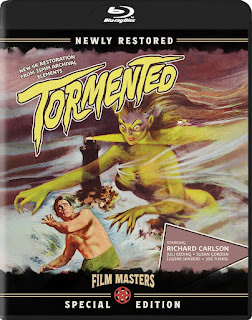The Daimjain Trilogy
It’s always been a bit surprising to me that the Godzilla series was such a big hit in the U.S. Despite being based on the Atomic Age sci-fi monstrosities already on display in theaters (particularly The Beast from 20,000 Fathoms) there were so many peculiar Japanese cultural hurdles to overcome. The language was easy enough to dub, but the mysticism, models and (most of all) man-in-suit special effects seemed like a big pill to swallow, even for desperate-to-be-entertained kids. But apparently the onscreen destruction was universal enough to cross all cinematic barriers.
That wasn’t the case with the Daimajin films, a kaiju-samurai combo set in feudal Japan featuring a stone mountain god than stomps on any army that gets out of line. Likely due to the period setting and rare appearances by the titular monster, the trilogy rarely turned up in syndication packages and wasn’t even on the radar for most Western audiences.
The first film is a stylized samurai adventure that pits the escaped heir of a conquered kingdom against the brutal overlords who killed his parents. Return of Daimajin recycles almost the exact same plot, while Wrath of Daimajinfocuses (Gamera-style) on four youngsters trying to rescue their captured relatives. Even if the plots play like a skipped record, it’s a uniquely Japanese franchise that doesn’t condescend to appeal to an international audience.
Daimajin himself is a stunning creation brought to life in typical suit-mation fashion but frightening in his righteous anger, stomping and stabbing the guilty in a far more personal sort of violence. There’s still plenty of destruction – wooden temples this time instead of Tokyo skyscrapers – and some epic effects work including a Moses-style parting of the seas. The only asterisk is the stone giant’s screen time which is limited to around 20-minutes per film. But the focus on personal tragedy and sacrifice is what makes the trilogy unique…and completely irresistible to Japanese monster movie fans.
Easily trumping the previous barebones Blu-ray set from Mill Creek, Arrow Video’s three disc limited edition includes a commentary for each film, interviews, alternate U.S. opening credits, video essays, trailers, postcards and an illustrated 100-page book.




This comment has been removed by the author.
ReplyDeleteWhat is the region coding on the Arrow Video boxed set? That is, will I be able to watch it on a Region A Blu-ray Disc player?
ReplyDelete